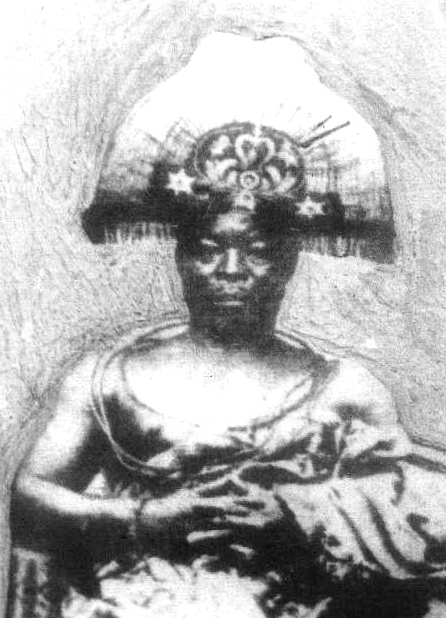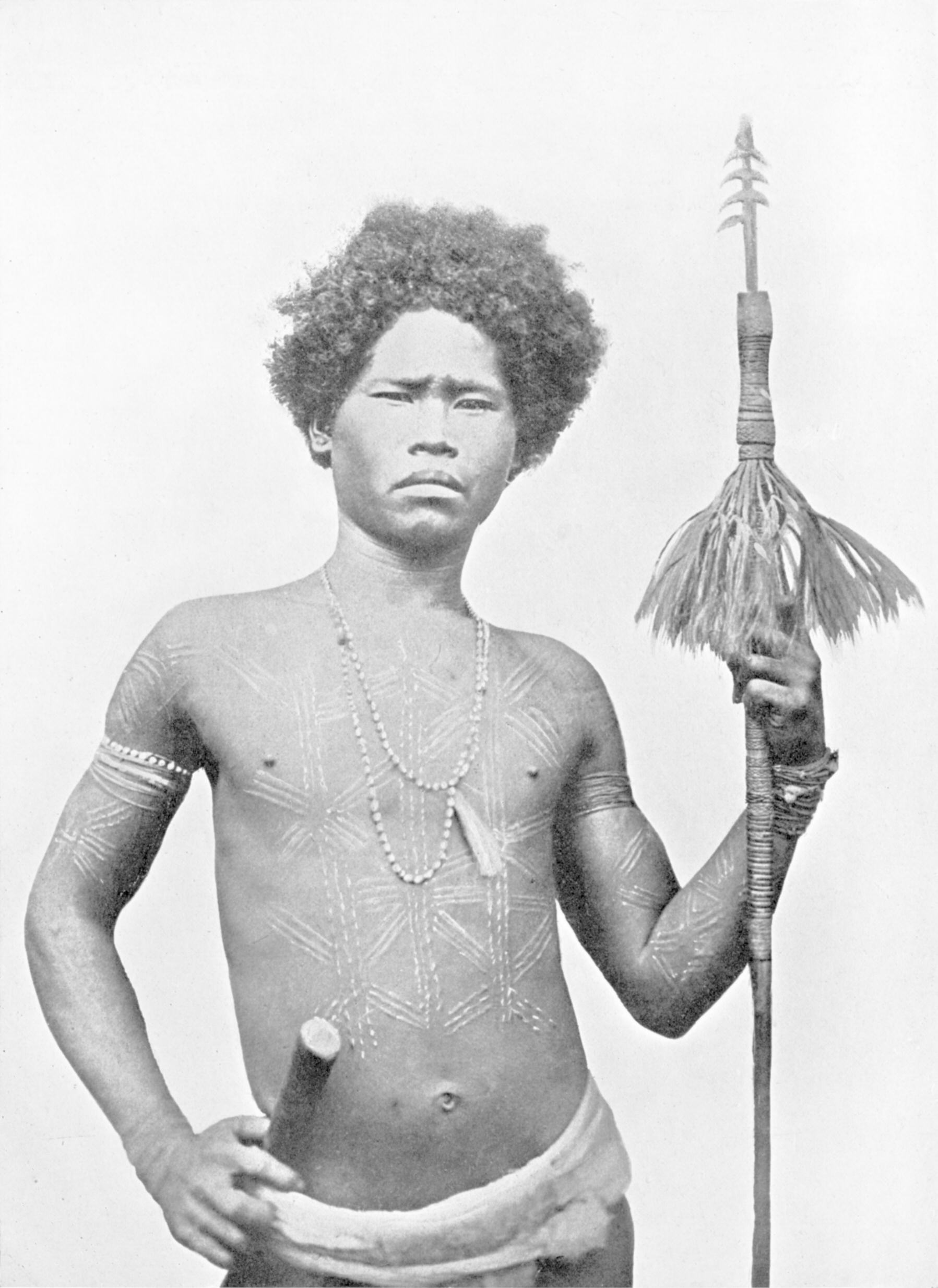|
Oba Ewuare
Ewuare (also known as Ewuare the Great or Ewuare I), originally known as Prince Ogun, was the twelfth Oba of Benin, Oba of the Benin Empire from 1440 until 1473. Ewuare became king in a violent coup against his brother Uwaifiokun which destroyed much of Benin City. After the war, Ewuare rebuilt much of the city of Benin, reformed political structures in the kingdom, greatly expanded the territory of the kingdom, and fostered the arts and festivals. He left a significant legacy in the Kingdom of Benin Ewuare was most likely born in the Benin Royal Palace in Benin City and he wasn’t proclaimed heir. Originally named Prince Ogun, he was an insignificant member of the royal house, even challenged from birth. Ewuare's name means "the trouble has ceased", referring to when he finally gained the throne after rebelling against Uwaifiokun. During his reign, Edo was rebuilt and possibly started the construction of the Benin Moats. He was the founder of Benin's "Imperial Era" and expan ... [...More Info...] [...Related Items...] OR: [Wikipedia] [Google] [Baidu] |
Oba Of Benin
The Oba of Benin is the traditional ruler and the custodian of the culture of the Edo people and all Edoid people. The then Kingdom of Benin (not to be confused with the modern-day and unrelated Republic of Benin, which was then known as Dahomey) has continued to be mostly populated by the Edo (also known as Benin ethnic group). The dynasty is sometimes called the "Eweka dynasty", after its first ruler, Eweka I, and was preceded by the Ogiso monarchy. In 1897, a British military force of approximately 1,200 men under the command of Sir Harry Rawson mounted the Benin punitive Expedition. The force was dispatched in retaliation to the ambush of a British party, at Ugbine village near Gwato on 4 January 1897 by a group of Benin soldiers who were acting without orders from the Oba; the ambush had led to the deaths of all but two of the British party. The British force captured the capital of the Kingdom of Benin, sacking and burning the city while forcing the Oba of Benin, Ov ... [...More Info...] [...Related Items...] OR: [Wikipedia] [Google] [Baidu] |
Edo People
The Edo people, also referred to as the Benin City, Benin people, are an Edoid languages, Edoid-speaking Ethnicity, ethnic group. They are prominently native to seven Edo South Senatorial District, southern Local government areas of Nigeria, local government areas of Edo State, Nigeria. They are speakers of the Edo language and are the descendants of the founders of the Benin Empire, Benin Kingdom, Ogiso Igodo. They are closely related to other Edoid languages, Edoid ethnic groups, such as the Esan people, Esan, the Etsakọ people, Etsakọ, the Isoko language, Isoko and Owan, Urhobo as well as other southern ethnic groups. The names ''Benin City, Benin'' and ''Bini'' are Portuguese people, Portuguese corruptions, ultimately from the word ''Ubini'', which came into use during the reign of Oba of Benin, Oba (ruler) Ewuare, c. 1440. ''Ubini'' is an Edo State, Edo word meaning 'livable', used by Pa Idu, the progenitor of the Edo state people, to describe the area found as a livable ... [...More Info...] [...Related Items...] OR: [Wikipedia] [Google] [Baidu] |
Year Of Birth Unknown
A year is a unit of time based on how long it takes the Earth to orbit the Sun. In scientific use, the tropical year (approximately 365 solar days, 5 hours, 48 minutes, 45 seconds) and the sidereal year (about 20 minutes longer) are more exact. The modern calendar year, as reckoned according to the Gregorian calendar, approximates the tropical year by using a system of leap years. The term 'year' is also used to indicate other periods of roughly similar duration, such as the lunar year (a roughly 354-day cycle of twelve of the Moon's phasessee lunar calendar), as well as periods loosely associated with the calendar or astronomical year, such as the seasonal year, the fiscal year, the academic year, etc. Due to the Earth's axial tilt, the course of a year sees the passing of the seasons, marked by changes in weather, the hours of daylight, and, consequently, vegetation and soil fertility. In temperate and subpolar regions around the planet, four seasons ar ... [...More Info...] [...Related Items...] OR: [Wikipedia] [Google] [Baidu] |
1473 Deaths
Year 1473 ( MCDLXXIII) was a common year starting on Friday of the Julian calendar. Events January–December * February 12 – The first complete Inside edition of Avicenna's ''The Canon of Medicine'' (Latin translation) is published in Milan. * August 11 – Battle of Otlukbeli: Ottoman Sultan Mehmed II defeats the White Sheep Turkmens, led by Uzun Hasan. Date unknown * Stephen the Great of Moldavia refuses to pay tribute to the Ottomans. This will attract an Ottoman invasion in 1475, resulting in the greatest defeat of the Ottomans so far. * Axayacatl, Aztec ruler of Tenochtitlan, invades the territory of the neighboring Aztec city of Tlatelolco. The ruler of Tlatelolco is killed and replaced by a military governor; Tlatelolco loses its independence. * Possible discovery of the island of " Bacalao" (possibly Newfoundland off North America) by Didrik Pining and João Vaz Corte-Real. * The city walls and defensive moat are built in Celje, Slovenia. * ''Al ... [...More Info...] [...Related Items...] OR: [Wikipedia] [Google] [Baidu] |
Obas Of Benin
The Oba of Benin is the traditional ruler and the custodian of the culture of the Edo people and all Edoid people. The then Kingdom of Benin (not to be confused with the modern-day and unrelated Republic of Benin, which was then known as Dahomey) has continued to be mostly populated by the Edo (also known as Benin ethnic group). The dynasty is sometimes called the "Eweka dynasty", after its first ruler, Eweka I, and was preceded by the Ogiso monarchy. In 1897, a British military force of approximately 1,200 men under the command of Sir Harry Rawson mounted the Benin punitive Expedition. The force was dispatched in retaliation to the ambush of a British party, at Ugbine village near Gwato on 4 January 1897 by a group of Benin soldiers who were acting without orders from the Oba; the ambush had led to the deaths of all but two of the British party. The British force captured the capital of the Kingdom of Benin, sacking and burning the city while forcing the Oba of Benin, Ovon ... [...More Info...] [...Related Items...] OR: [Wikipedia] [Google] [Baidu] |
Igue Festival
Igue festival (also known as King's Festival) is a celebration with its origin in the Benin Kingdom of Edo State, southern Nigeria. One tradition states that the festival date coincided with the marriage of Ewuare Ewuare (also known as Ewuare the Great or Ewuare I), originally known as Prince Ogun, was the twelfth Oba of the Benin Empire from 1440 until 1473. Ewuare became king in a violent coup against his brother Uwaifiokun which destroyed much of Benin ... to a wife named Ewere. Celebrated between Christmas and New Year, the festival includes the Oba's blessing of the land and his people.The Igue festival also honors the memory of former Obas and spans a period of seven days. During the Igue ritual season, the Oba is prohibited from being in the presence of any non-native person. History The Igue Festival was initiated in the 14th century during the reign of Oba Ewuare I, who reigned in Benin between 1440 and 1473. Following Oba Ewuare I's experience whilst fighting ... [...More Info...] [...Related Items...] OR: [Wikipedia] [Google] [Baidu] |
Benin Art
Benin art is the art from the Kingdom of Benin or Edo Empire (1440–1897), a pre-colonial African state located in what is now known as the Southern region of Nigeria. Primarily made of cast bronze and carved ivory, Benin art was produced mainly for the court of the Oba of Benin – a divine ruler for whom the craftsmen produced a range of ceremonially significant objects. The full complexity of these works can be appreciated through the awareness and consideration of two complementary cultural perceptions of the art of Benin: the Western appreciation of them primarily as works of art, and their understanding in Benin as historical documents and as mnemonic devices to reconstruct history, or as ritual objects. This original significance is of great importance in Benin. In terms of specific imagery, leopards are identifying figures to represent the Oba of Benin as a competent and dominant force in their territory. Importance of art in Benin culture The Kingdom of Benin is ... [...More Info...] [...Related Items...] OR: [Wikipedia] [Google] [Baidu] |
Ruy De Sequeira
Ruy or RUY may refer to: Arts and Entertainment *Ruy, the Little Cid, Spanish animated television series *Ruy Blas, a character in the eponymous tragic drama by Victor Hugo People *another form of Rui, a Portuguese male given name *another form of the Spanish male given name Rodrigo *Ruy Finch, geologist active in the 1930's *Ruy López de Segura (1530-1580), Spanish chess player *Ruy Ramos (born 1957), Japanese footballer *Ruy (footballer) (born 1989), Brazilian footballer Places *Ruy, Isère, a commune in France *Ruy, Iran, a city in Iran *Ruy Special Town, a village in Iran *Ruy Mountain, a mountain on the border of Bulgaria and Serbia Transport * Copán Ruinas Airport (IATA: RUY), an airport serving the town of Copán Ruinas in Honduras Other uses *Ruy Lopez The Ruy Lopez (; ), also called the Spanish Opening or Spanish Game, is a chess opening characterised by the moves: :1. e4 e5 :2. Nf3 Nc6 :3. Bb5 The Ruy Lopez remains one of the most popular chess openings, ... [...More Info...] [...Related Items...] OR: [Wikipedia] [Google] [Baidu] |
Scarification
Scarification involves scratching, etching, burning/ branding, or superficially cutting designs, pictures, or words into the skin as a permanent body modification or body art. The body modification can take roughly 6–12 months to heal. In the process of body scarification, scars are purposely formed by cutting or branding the skin by various methods (sometimes using further sequential aggravating wound-healing methods at timed intervals, like irritation). Scarification is sometimes called '' cicatrization''. History Scarification has been traditionally practiced by darker skinned cultures, possibly because it is usually more visible on darker skinned people than tattoos. It was common in indigenous cultures of Africa (especially in the west), Melanesia, and Australia. Some indigenous cultures in North America also practiced scarification, including the ancient Maya. Africa In Africa, European colonial governments and European Christian missionaries criminalized and sti ... [...More Info...] [...Related Items...] OR: [Wikipedia] [Google] [Baidu] |







